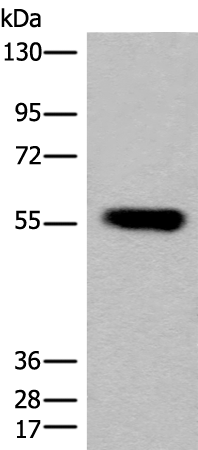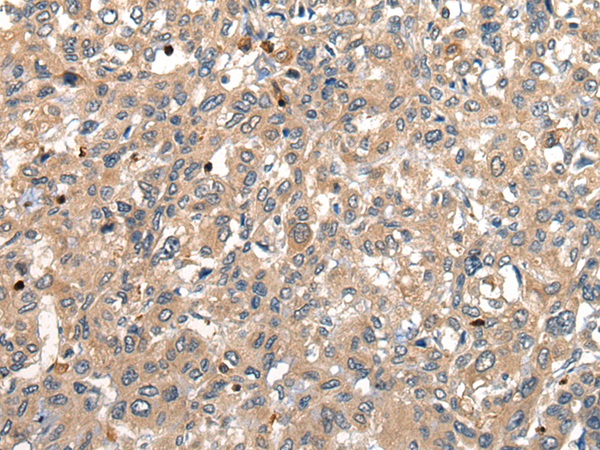

| WB | 1/1000 | Human,Mouse,Rat |
| IF | 咨询技术 | Human,Mouse,Rat |
| IHC | 1/100-1/500 | Human,Mouse,Rat |
| ICC | 技术咨询 | Human,Mouse,Rat |
| FCM | 咨询技术 | Human,Mouse,Rat |
| Elisa | 咨询技术 | Human,Mouse,Rat |
| Aliases | p57; IMD8; TACO; CLABP; HCORO1; CLIPINA |
| WB Predicted band size | 51 kDa |
| Host/Isotype | Rabbit IgG |
| Antibody Type | Primary antibody |
| Storage | Store at 4°C short term. Aliquot and store at -20°C long term. Avoid freeze/thaw cycles. |
| Species Reactivity | Human, Mouse, Rat |
| Immunogen | Synthetic peptide of human CORO1A |
| Formulation | Purified antibody in PBS with 0.05% sodium azide and 50% glycerol. |
+ +
The Protein O-fucosyltransferase 1 (POFUT1) antibody is a research tool designed to detect and study POFUT1. an enzyme critical for post-translational modification of proteins. POFUT1 catalyzes the addition of O-linked fucose residues to specific serine/threonine residues in epidermal growth factor-like (EGF) repeats of target proteins, notably receptors in the Notch signaling pathway. This modification is essential for proper Notch receptor trafficking, ligand binding, and activation, influencing cell differentiation, development, and tissue homeostasis. Dysregulation of POFUT1 has been implicated in cancers, cardiovascular diseases, and developmental disorders, including Dowling-Degos disease.
POFUT1 antibodies are widely used in immunoblotting (Western blot), immunohistochemistry (IHC), immunofluorescence (IF), and flow cytometry to assess protein expression, localization, and function in various biological models. These antibodies are typically raised in hosts like rabbits or mice using immunogenic peptides or recombinant protein fragments. Validated antibodies help researchers explore POFUT1’s role in Notch-dependent processes, such as stem cell maintenance, angiogenesis, and tumorigenesis. Specificity and sensitivity are confirmed through knockout controls or siRNA-mediated silencing. As therapeutic targeting of Notch signaling gains interest, POFUT1 antibodies also contribute to drug development by elucidating mechanisms of O-fucosylation in disease contexts.
×